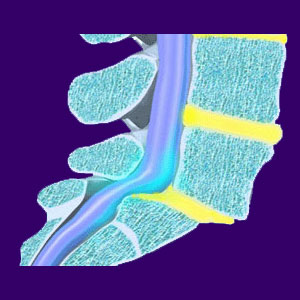
A transitional vertebra is a somewhat common lumbosacral spinal abnormality in which one spinal bone does not form correctly and definitively as a lumbar segment or a sacral segment. Instead, the vertebral body takes on characteristics of both typical lumbar and sacral spinal bones; but does not truly represent either variety in totality. In most cases, these abnormalities are harmless and not symptomatic, but they are often blamed for causing lower back pain and sometimes may be the actual source of symptoms in very rare instances.
This essay examines the incidence of atypical transitional vertebral bones at the lumbosacral spinal juncture.
Transitional Spinal Vertebra Facts
There are a variety of forms of transitional spinal bones. Most often, the occurrence of an extra vertebra is demonstrated and is often named L6. Sometimes the usual L5 is replaced by a transitional segment and other times, the usual S1 is replaced by a transitional segment. Occasionally, transitional spinal bones can also occur at the cervicothoracic juncture, as well.
Transitional spinal segments can be diagnosed using advanced imaging technologies and are not usually any cause for concern. The vast majority are not problematic and statistically do not cause pain. However, in uncommon instances, there might be a pathological component to a transitional segment which may make it symptomatic.
Transitional Vertebra Issues
Transitional spinal segments can act as scapegoat conditions and are used to explain pain in a great number of affected patients. Of all these diagnoses, a few are correct and involve spinal stenosis or foraminal stenosis conditions enacted by the unusually formed vertebra. In other cases, the diagnosis is mistaken and the appearance of the transitional segment is purely coincidental to any symptomatic expression.
Many studies have been done on transitional spinal bones and most have found no correlation with lower back pain or sciatica. Some studies have found links, but most of these were investigating a specific treatment for the condition, so their objectivity may be suspect. Remember, pain may also be a direct result of the well publicized nocebo effect of any abnormal spinal diagnosis.
Transitional Vertebra Assistance
If you have a transitional spinal segment in your lower back or neck, it is certainly possible that it is causing you some pain. This is true for any vertebra, even if it is formed correctly.
The fact remains that although structural issues can exist in the spine, most anatomical irregularities are not the source of any pain. A good rule of thumb states that true structural issues generally respond well to appropriate treatment, while conditions which defy logic and therapy are typically misdiagnosed. Keep this in mind if you have already tried several back pain treatments for your transitional spinal segment without success.
If you are currently seeking care for a transitional segment, be sure to consult with a specialist. Far too many chiropractors and general orthopedists place the blame on these bones without any evidence of a pain generating process. Do not take chances with your health or your future, always seek qualified care from a doctor with focused expertise in vertebral anomalies.





